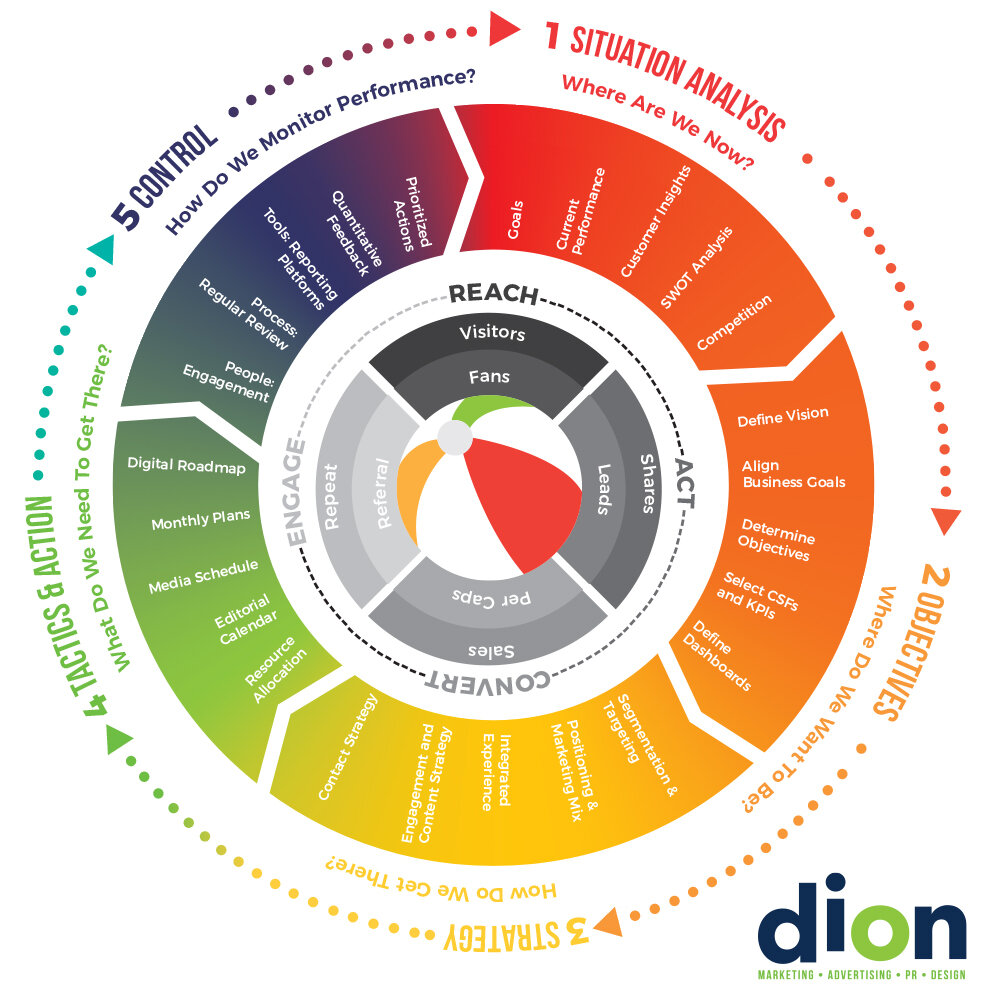Creating a Yearly Marketing Recap For Businesses
Earlier this month, we wrote a blog post highlighting the significance of creating a yearly recap for your business. Today, we’re breaking that post down even further into a Part 2! As mentioned previously, we suggest creating your recap in PowerPoint, as this is an efficient platform to organize your business’s stats and analytics. We hope the tips in this blog post will be invaluable information for anyone looking to wrap up their brand’s initiatives in 2019 and head into 2020 feeling organized and ready to take on the new year. Let’s dive in!
INTEGRATED MARKETING GROWTH WHEEL
First, we’d like to share what we call our Integrated Marketing Growth Wheel. This graphic that our team strategically created is outlined with strategy processes and encompasses goals and KPI’s. The reason we are incorporating this wheel into today’ blog is because this is a considerable resource to refer to in different stages of the year. It’s important to keep in mind that a yearly recap is not created in a day. If you want to create a robust review for your business, you’ll have to continue to track your brand’s situation analysis, objectives, tactics and action as well as the control variables throughout the entire year.
CREATING YOUR RECAP
Once you’re ready to compact your annual stats into an organized recap, you’ll need to have each month’s insights at hand. We suggest starting with an overview and marketing summary. This section of your recap can include points such as your marketing goals and whether or not they were achieved, a comparison to last year as well as any advertising shifts that occurred. Once you put together this information, you can break up the rest of your recap by topic. Here are some suggestions: Advertising, Revenue, Google Analytics, Social, and News (these are just a few!) Lastly, you’ll want to make note of any key takeaways from the year. Did your business have any new launches that were a success? How did your digital campaigns perform? Are there any shifts you’d like to plan for the upcoming year?
In conclusion, each section of your recap should be as detailed as possible. For example, if you choose Advertising as one of your topics, you should elaborate with sub-topics such as Facebook Advertising, Google Search ads, Online Display Ads, etc. and then these subcategories should be broken down as well. For example, subcategories for specific ad campaigns should include CPC (cost per click), CTR (click through rates) and impressions, as well as how much traffic each advertising channel is responsible for driving to the website or a specific landing page.
If you need help and would like guidance for building a detailed yearly recap including our full list of topic suggestions and subcategories, call us today to book a consultation!

